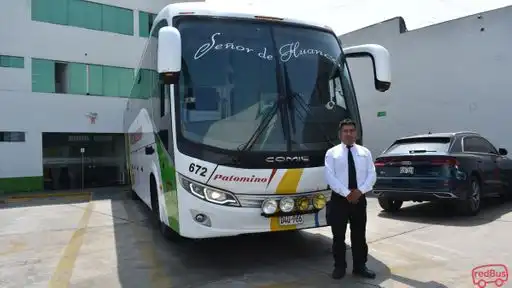Ica to Ayacucho Bus
OUR PROMISE
SECURE PAYMENT
redBus has secure payments and keeps your information and purchases completely safe and secure.
ATTRACTIVE DEALS
Get amazing discounts every time you book with redBus
WIDE CHOICE OF BUSES
150+ Bus companies with 800+ Routes in Perú
Ica to Ayacucho Bus Service
Avg. Bus Duration
:8 hrs 47 mins
Buses depart from
:Ica
Bus arrives in
:Ayacucho
Cheapest Bus
:PEN 100.00
Bus Companies
:2
Earliest Bus
:20:00
Last Bus
:21:30
Daily Bus Services
:9
Ica to Ayacucho Bus Timings & Fare
| Bus Operator | First Bus | Last Bus | Duration | |
|---|---|---|---|---|
| Palomino | First Bus - 21:30 | Last Bus - 21:30 | 7 hrs 0 mins | VIEW PRICE |
| Oropesa | First Bus - 20:00 | Last Bus - 20:30 | 9 hrs 0 mins | VIEW PRICE |
Buy Ica to Ayacucho Bus Tickets Online - Unlock Extra Savings with redDeals on redBus
Travel by Bus from Ica to Ayacucho
The road journey from Ica to Ayacucho is pleasant and relaxing. At redBus, we work with different bus companies that operate on this route with well-maintained buses and experienced drivers. Although the travel time varies from one bus operator to another because of traffic and climatic conditions, our continuous availability of bus services between Ica and Ayacucho reduces uncertainty and offers convenience for travelers.
Top Bus Operator Images





OTHER BOARDING & DROPPING POINTS IN
Ica
- Terminal El Ovalo
- Terminal Ica
Ayacucho
- Terminal Terrestre Wari
Why book a Ica to Ayacucho bus with redBus?
You can also time-to-time redBus offers while booking your bus tickets online from Ica to Ayacucho. Follow a simple, fast and secure bus booking procedure. This helps save time and also helps to create a joyful travel experience!
About Ica
About Ayacucho
Hoteles en Ayacucho
Hoteles en Ayacucho
Restaurantes y Bares en Ayacucho
Restaurantes y Bares en Ayacucho
Lugares turísticos en Ayacucho
Lugares turísticos en Ayacucho
Fechas importantes de Ayacucho
Fechas importantes de Ayacucho
¿Cómo moverse por Ayacucho?
¿Cómo moverse por Ayacucho?
¿Cómo llegar a Ayacucho?
¿Cómo llegar a Ayacucho?
Gastronomía en Ayacucho
En la ciudad de Ayacucho, probarás deliciosos platos como:
- Adobo Ayacuchano.
- Puca picante.
- Caldo de cabeza.
Cosas que Comprar en Ayacucho
Los recuerdos mas típicos que podrás comprar en Ayacucho son:
- Tablas de Sarhua
- Piedra de Huamanga
- Platería y Filigrana
Datos de Ayacucho
Datos de Ayacucho
Operadores de Bus de la ruta Lima a Ayacucho
Operadores de Bus de la ruta Lima a Ayacucho
En Conclusión:
En Conclusión: